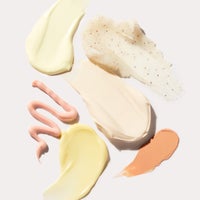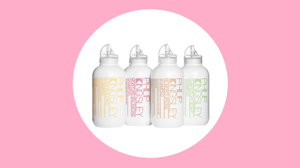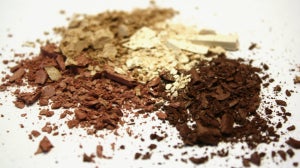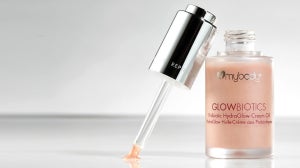
Transitioning our skin care routines between seasons isn’t always easy. By the time we have to rearrange our routines for new seasonal concerns, it feels as though we’ve only just gotten comfortable with what we’re using. This spring, we’re making it our mission to help you make that skin care transition with ease.
To create this guide, we consulted Jillyan Scarpa, SkinStore’s in-house esthetician, who’s available to you as part of our new Online Beauty Concierge Service. As a licensed esthetician, Jillyan will be able to provide you with beauty advice based on your concerns and desired needs with a follow up afterwards—completely free! To learn more and book a service with Jillyan, click here.
We sat down with Jillyan to talk all things spring skin. To kick it off, here are some products Jillyan recommends implementing into your spring skin routine:
- Q How much should your routine change from winter to spring?
- A Just as the seasons change, so does our skin, so, we need to think about how the weather changes will impact our skin and how our concerns—oil production, dryness, dehydration, sensitivity, anti-aging, acne and sun protection from UVA and UVB rays—will be addressed in the new season. Some things to keep in mind when making changes to your spring routine: What do we want to target? What do we want to treat? What is our skin care goal? Keep it simple and consistent. The moment a skin care routine becomes a chore we are less prone to follow it, and our skin pays the price.
- Q Which products should we be switching out and why?
- A Winter can dry out the skin and take a toll on its texture. That’s why we use heavier and more emollient products during this season. When we think of spring we think of healthy, hydrated, and glowing skin. To achieve refreshed spring skin, I recommend switching to a lighter, milder cleanser and gentler exfoliation. Use hydrating masks, consider switching to a lighter moisturizer and don’t forget to continue applying SPF 30 +. If you’re using devices and tools for skin care and makeup, don’t forget to sanitize and clean them. These seasonal skin care adjustments will help skin stay healthy and balanced year-round.
- Q Is there anything we should be adding into our routine if we have not integrated it already?
- A I’d love to see vitamin C and sunscreen containing an SPF 30 + in your AM routine and retinol in your PM routine. The addition of vitamin C helps to brighten and even your skin tone, while protecting it from the harmful effects caused by free radicals and pollutants. Sunscreen SPF 30 + is necessary all year long; it protects the skin from the sun’s damaging UVA and UVB rays. Retinol, which is a derivative of vitamin A (think an apple a day), helps to minimize fine lines and wrinkles, improve skin discoloration, minimize the appearance of pores, decrease the loss of elasticity and even help with acne. Skin can become more sensitive to sunlight when using vitamin C and retinol, hence making the usage of sunscreen a must! Tip: if you are new to using vitamin C and retinol, I recommend using the products every other day for the first two weeks of usage. This gives your skin the opportunity to build up its endurance to these potent ingredients without irritation.
- Q How often should we exfoliate our skin in the spring compared to winter and what is the best way to do it?
- A In the spring, I recommend exfoliating 1-3 times per week. Skin isn’t as dry and flaky as it is during the winter and doesn’t require as much manual exfoliation. Over-exfoliating your skin can cause dehydration, irritation and breakouts. The goal is to keep skin hydrated and balanced, not dehydrated and unbalanced. The best way to exfoliate your skin safely and effectively is with your hands, cotton pads, face cloths or wipes. This allows you to control the pressure of the application. By massaging the exfoliant in a circular motion to your face, neck and décolleté, it will gently remove the dead skin cells and impurities and increase blood flow and circulation. Your skin is left soft and prepped for your other skin care products, bringing you one step closer to your perfect spring skin.
- Q What can we carry over from our winter routines?
- A We can certainly integrate some of our favorite winter skin care products into our spring routines. Some of my favorites that I cannot live without regardless of the season: eye cream, daily serums, and sunscreen/SPF products. The continued use of these products is beneficial to your skin year-round.
- Q What is a common skin care mistake people make when transitioning their routines?
- A A common skin care mistake that I see when people transition their skin care routines from winter to spring is that some people begin to neglect their routines. They use little skin care, if any at all. It is a common misconception that skin care in the warmer weather can cause oily skin and break outs. Contrary to that belief, the practice of a daily skincare routine will help to hydrate, protect and keep your skin clear.
- Q How often should we be applying/reapplying SPF? Is there a certain number we should strive for when it comes to SPF?
- A SPF application depends on what you are doing and where you are. For example, if you work indoors and sit away from windows, an initial application would suffice. However, if you are spending more time outdoors, sunscreen should be reapplied every two hours. Look for an SPF 30 or greater, water-resistant sunscreen that provides broad-spectrum coverage. This ensures you will get effective protection against UVA and UVB light.
- Q Should we be introducing retinol into our routines during the spring? Is it a skin care fact or myth that retinol is a terrific way to prep your skin for summer?
- A Retinol is a powerhouse antioxidant that can be beneficial to your skin during spring or any other time of the year. If you are currently using retinol in your skin care routine, you are ahead of the game. Fact: retinol reduces fines lines and wrinkles, improves skin discoloration and loss of elasticity, turns over dead skin cells and treats acne. Retinol in a routine is always prepping the skin to look its best, regardless of the season.
- Q What ingredients should we be looking for in our spring skin care? Are there any ingredients we should avoid?
- A Top ingredients that you should be looking for in your spring skin care routine are vitamins B, C, E, ferulic acid and retinol/vitamin A. For hydration, look for hyaluronic acid, ceramides and peptides and for sun protection, use SPF 30+. These ingredients can help treat and prevent specific skin concerns, as well as be proactive with others. They can help to keep your skin hydrated (we can always use extra hydration as the weather gets warmer), brighten and even your skin tone. Antioxidants can also help protect the skin from the harmful free radicals that are caused by the sun's UVA and UVB rays and would be a great addition to your springtime skin care. As for the ingredients you want to steer clear of in the spring: parabens, mineral oil and anything with heavy fragrance as those ingredients can potentially clog pores, agitate the skin and cause breakouts







